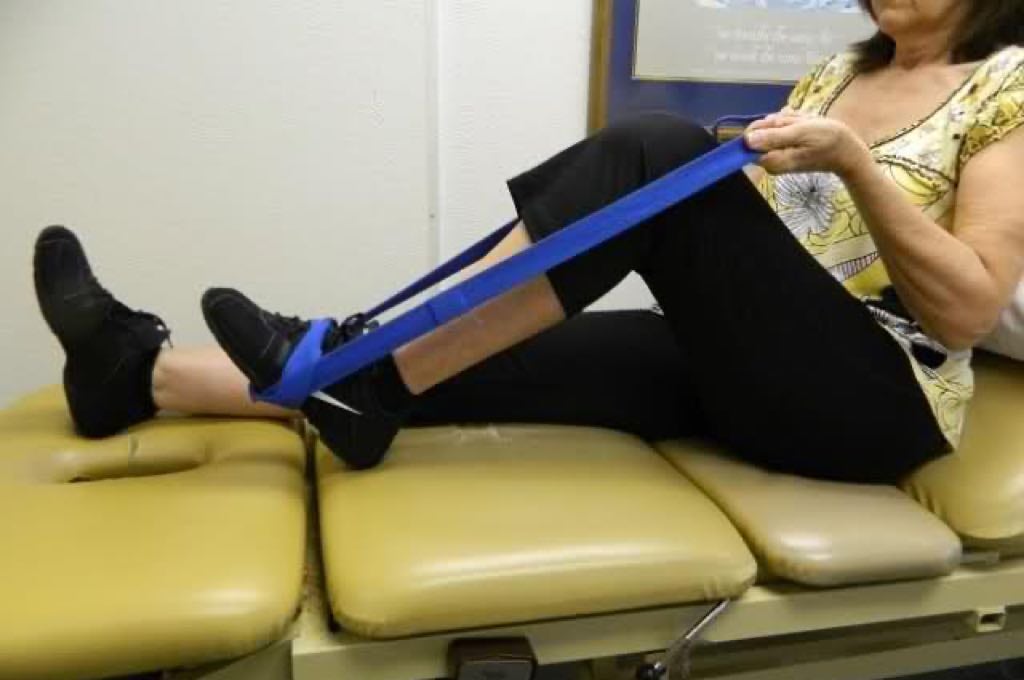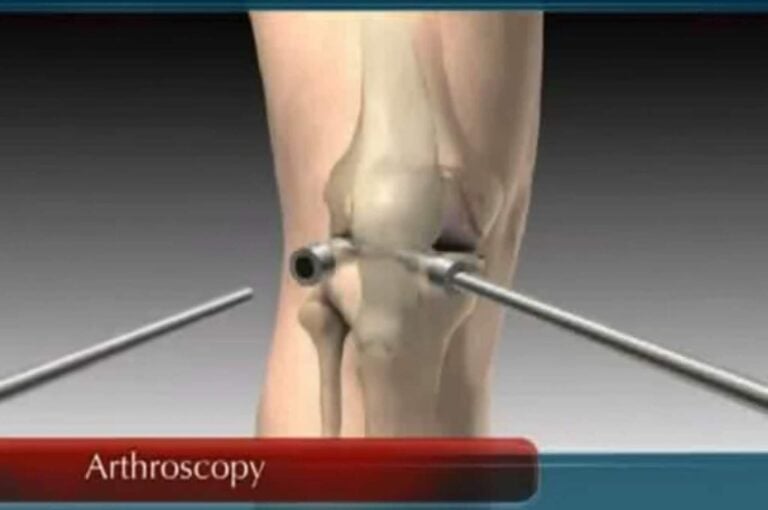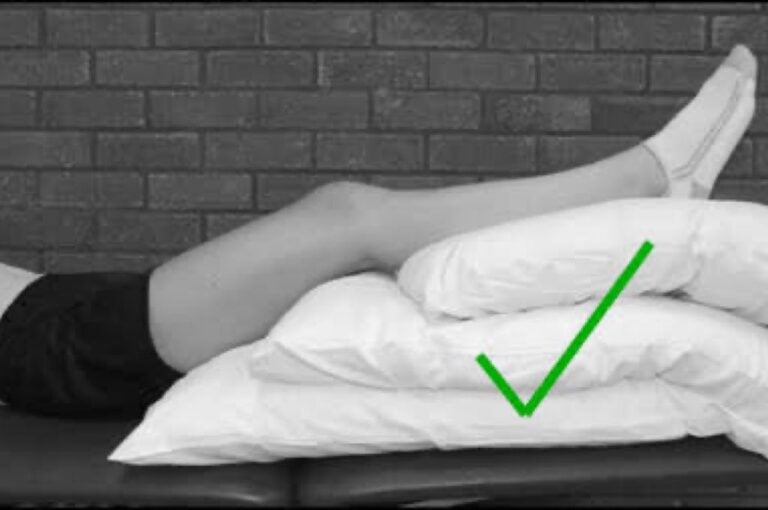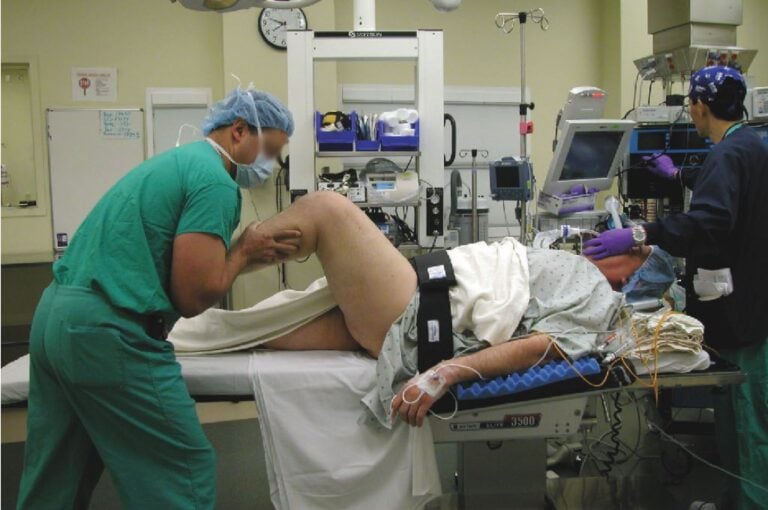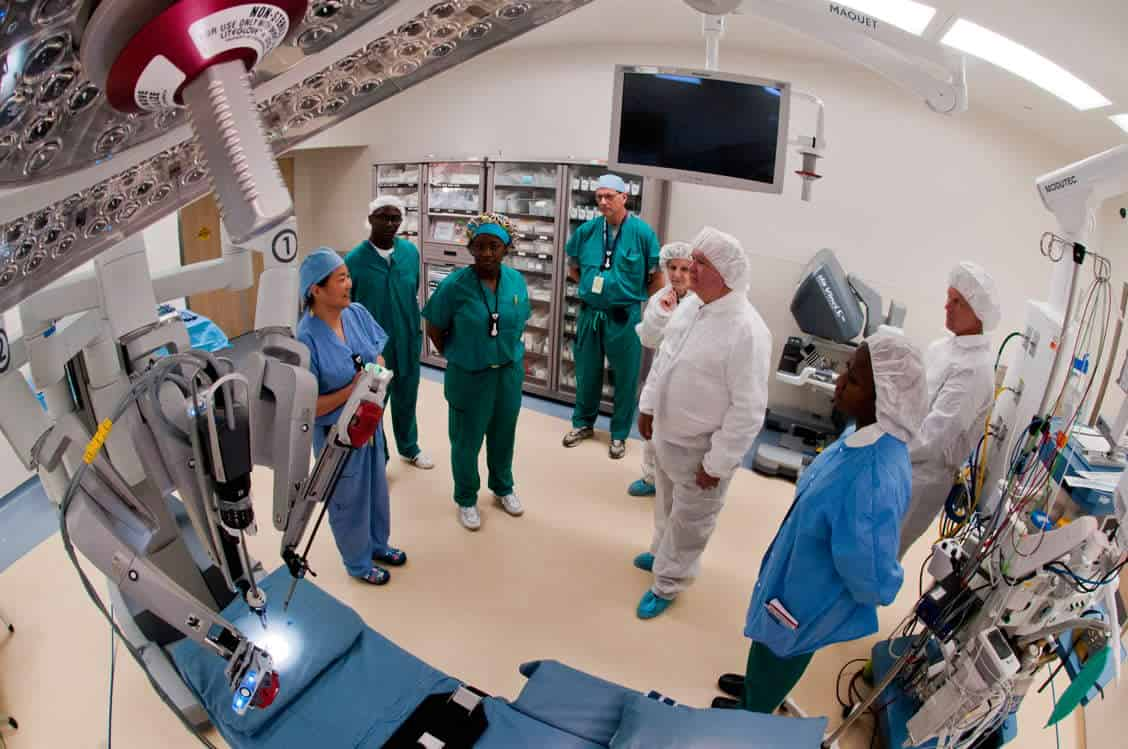One of the most rewarding things to look forward to after knee replacement surgery is regaining mobility and independence that were previously compromised by an arthritic knee. In addition to getting adequate rest and managing your post-operative pain, the road to recovery following a total knee replacement includes light exercise and physical therapy techniques that will aid you in recovering from surgery. Your participation in the healing process is important to the long-term success of your knee replacement.
Exercises performed after surgery
Very soon after surgery it will be possible to stand and walk on your replaced knee and you’ll find it very stable compared to your old arthritic knee. Getting started with proper walking is the best way to help your knee recover from surgery.1 At first, you’ll use a walker or crutches with assistance from the medical personnel in the hospital. As you start walking, try to walk as smoothly as you can. As your muscle strength and endurance improve, your coordination will improve and you will be able to spend more time walking.
While still in the hospital, your nurses will make sure you can do the basics of personal maintenance such as walk with an aid (walker or crutches) to the bathroom, stand for short periods at the sink, and go up and down a few stairs. In some situations, a physical therapist may work with you on various exercises designed to strengthen, promote healing and increase the range of motion of your new knee. While you’re in the hospital you might be fitted with a continuous passive motion exercise machine (CPM) that will keep the knee bending and straightening, which is to prevent your leg from tightening up and swelling. Even if your doctor does not put your leg in a CPM, you can pedal your feet, gently move your ankles back and forth, and do heel slides as you lie in bed to promote the healing blood flow in your legs.2
Before you leave the hospital, you’ll need to meet a few basic goals. These include getting in and out of bed by yourself, bending your knee and showing progress in gaining range of motion, walk unassisted with crutches or a walker, negotiate a limited amount of stairs, and demonstrate you know how to do recommended therapeutic home exercises.2
Exercises and therapy practiced at home
Printed material illustrating exercises you can do while you are recovering from surgery will be given to you by your surgeon. You may also be visited by a rehabilitation therapist who will see that you are doing your recovery exercises properly and safely. It’s important to make a commitment to yourself to do the prescribed exercises as long as they do not cause you pain or create additional swelling. The key to remember is don’t over do it. Healing is a gradual process, and overworking your still-healing muscles and tissues can do more harm than good. Let your body tell you how much effort is good enough for you.
Common recovery exercises 1
- Standing Knee Bends
- Assisted Knee Bends
- Knee Exercises with Resistance
- Exercycling (stationary bicycle riding)
During rehabilitation you can expect to have some good days and some bad days, but you should notice improvement and a gradual increase in your endurance over the weeks and months after your surgery. You will experience pain and swelling during your recovery and this can be managed by elevating your leg and applying ice wrapped in a towel, and taking your pain medications as prescribed. If you get more pain after exercising, it is better to cut back on the activity rather than take extra pain medication. Eventually, you’ll be able to do more activity with less pain.
Hedge your bets for success
Staying active, even beyond your home exercise program, will help hasten your recovery. But these activities should never be done to the point where it causes more pain. After the first few weeks of recovery are completed, you’ll be able to do some light walking and possibly a few turns on an exercise bicycle. After about 8 weeks, normal walking, swimming, cycling, and gentle aerobics-style exercises may be possible for you. However, activities such as baseball, basketball, tennis, jogging and skiing are not recommended and usually not physically possible during recovery.3 It is important to realize that it may be up to a full year before you’re able to partake in these types of activities if they were part of your life before surgery.
Remember to follow your orthopedic surgeon’s instructions and take care to protect your new knee replacement and your general health. These are the most important ways you can contribute to the success of your recovery from total knee replacement surgery.
Sources
- American Academy of Orthopaedic Surgeons, “Total Knee Replacement Exercise Guide” https://orthoinfo.aaos.org/topic.cfm?topic=A00301
- American Academy of Orthopaedic Surgeons, “Activities After a Knee Replacement” https://orthoinfo.aaos.org/topic.cfm?topic=A00357
- Cluett, Jonathan M.D. “Activities After Knee Replacement” https://orthopedics.about.com/od/kneereplacement/qt/activities.htm
